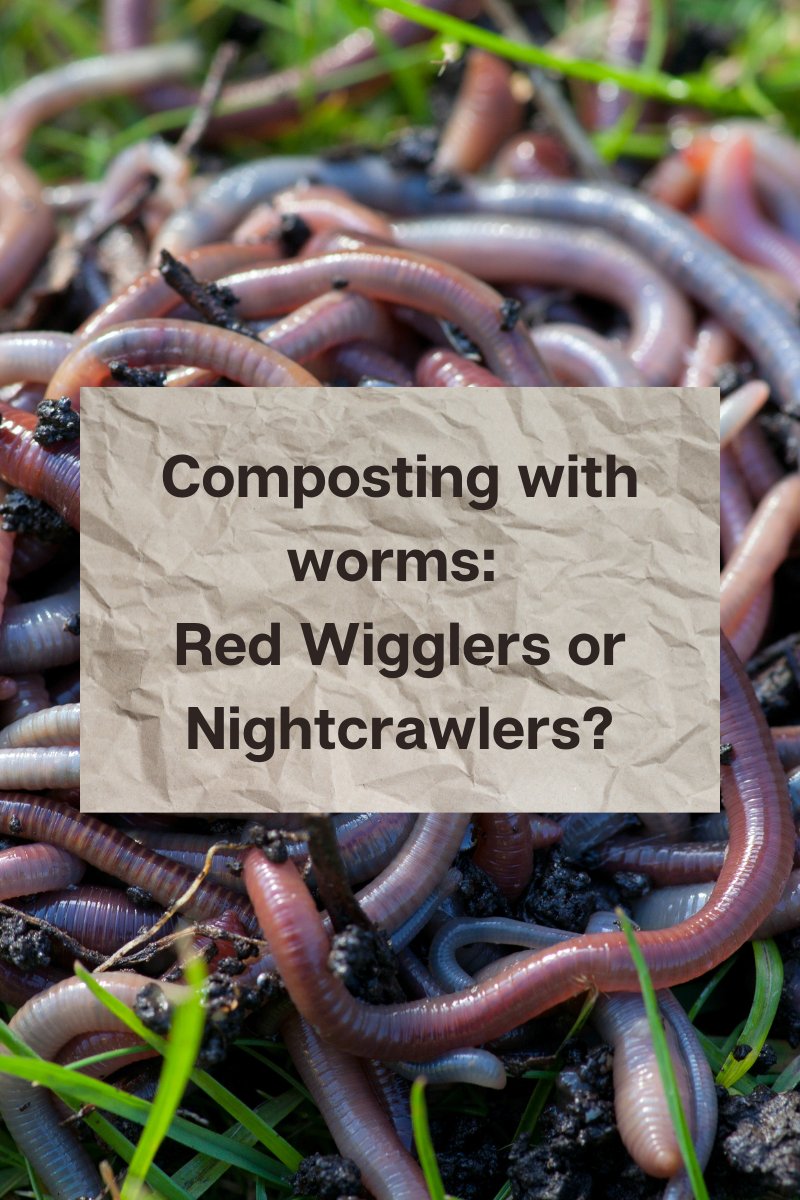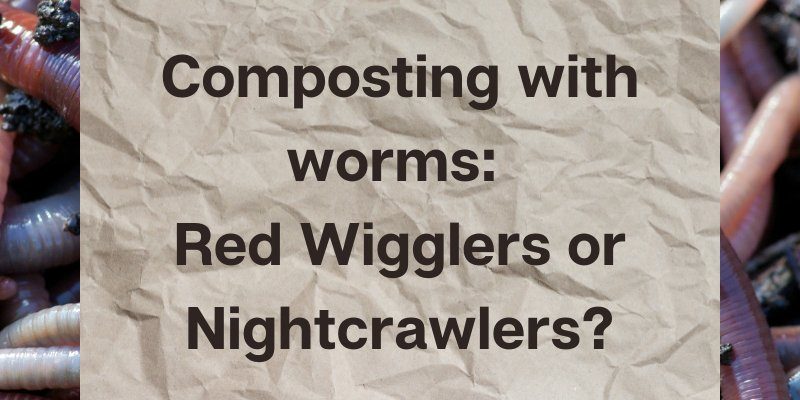
Think of it this way: just like coffee and tea might satisfy your morning cravings, but they serve different experiences, red wigglers and nightcrawlers have their unique traits and purposes. Let’s dive into what sets them apart, and why knowing the difference is beneficial for your garden or compost bin.
What Are Red Wigglers?
Red wigglers, scientifically known as *Eisenia fetida*, are the little champions of composting. These guys thrive in rich organic matter, which makes them perfect for compost bins and worm farms. You might find them in layers of decomposing leaves or kitchen scraps, munching away and turning waste into nutrient-rich fertilizer.
One of the first things you’ll notice about red wigglers is their size. They tend to be smaller than nightcrawlers, averaging about **3 to 4 inches long**. They have a distinct reddish-brown color, which makes them stand out against the dark compost. Here’s the thing—red wigglers are *active and wriggly*, often darting around in search of food. This energetic behavior is a good sign that they’re happy in their environment!
What Are Nightcrawlers?
On the flip side, we have nightcrawlers, or *Lumbricus terrestris*. These are the big guys on the block, often reaching lengths of **8 to 10 inches**. Nightcrawlers are typically found in garden soil, particularly in cooler climates. They play a crucial role in aerating the soil as they tunnel through it, allowing air and water to reach plant roots more effectively.
Unlike their red counterparts, nightcrawlers tend to have a smoother body texture and usually display a more muted coloring, often a brown or grayish hue. They’re also more of a loner compared to red wigglers; you won’t find them swarming in compost piles. Instead, they prefer a more solitary lifestyle in deeper soil layers.
Differences in Habitat Preferences
When it comes to where they like to hang out, red wigglers and nightcrawlers have some pretty distinct preferences. Red wigglers are your go-to worms for composting systems and vermiculture setups. They thrive in rich, moist environments where organic matter abounds. You can find them happily munching on kitchen scraps, coffee grounds, and decaying leaves.
Nightcrawlers, however, have a different routine. They enjoy cooler climates and prefer to live deeper in the soil where it’s damp. This helps protect them from the heat of the sun and potential predators. They’re essential for improving soil structure and composition, as they create tunnels that enhance drainage and root growth.
How to Spot the Differences
If you’re eager to identify whether you’re dealing with red wigglers or nightcrawlers, here are a few key characteristics to look for:
- Size: Red wigglers are smaller, around 3–4 inches, while nightcrawlers can grow up to 10 inches.
- Color: Red wigglers are usually reddish-brown, whereas nightcrawlers have a more muted brown or grey appearance.
- Behavior: Red wigglers are active and wriggly, darting about in compost, while nightcrawlers are slower and often found buried deeper in the soil.
Ultimately, these physical features will make it easier for you to tell the two apart. Plus, once you get the hang of it, you’ll be spotting them like a pro—almost like identifying different types of fish!
Why It Matters: The Benefits of Each Worm
So, why does it matter whether you’re using red wigglers or nightcrawlers in your garden? Well, each type of worm brings unique benefits to the table.
Red wigglers are incredible for composting. They break down food scraps and organic matter at a fast pace, producing nutrient-rich *vermicompost*. This can be a game-changer for your plants, giving them the food they need to thrive.
On the other hand, nightcrawlers excel in soil aeration. Their burrowing habits allow air, water, and nutrients to seep into the soil more efficiently, which enhances root growth. If you’re looking to improve soil health in your garden, inviting nightcrawlers to hang out is a fantastic way to go.
How to Use Each Type of Worm
If you’re eager to put these wormy wonders to work, here’s how to use each type effectively:
– **For Red Wigglers:**
– Set up a compost bin with organic waste.
– Layer kitchen scraps, shredded paper, and moist leaves.
– Add red wigglers to the mix, and they’ll start breaking it all down.
– **For Nightcrawlers:**
– Simply enrich your garden soil by introducing nightcrawlers.
– They’ll create their tunnels, allowing for better aeration and drainage.
– Use them in larger garden beds or areas needing improved soil quality.
By understanding how to harness the strengths of each worm type, you’ll create a thriving garden ecosystem that’s bursting with life.
Recognizing the differences between red wigglers and nightcrawlers doesn’t just boost your worm knowledge; it can also significantly improve your garden and composting efforts. Whether you’re turning food scraps into fertilizer or enriching your soil for a bountiful harvest, these worms each have their role to play.
Remember, red wigglers excel in composting while nightcrawlers are champions of soil health. So, the next time you’re digging in the dirt or tossing scraps into your compost, you’ll know exactly who you’re working with. With a little attention and care, you’ll be on your way to creating a vibrant garden ecosystem that thrives. Happy worm hunting!

